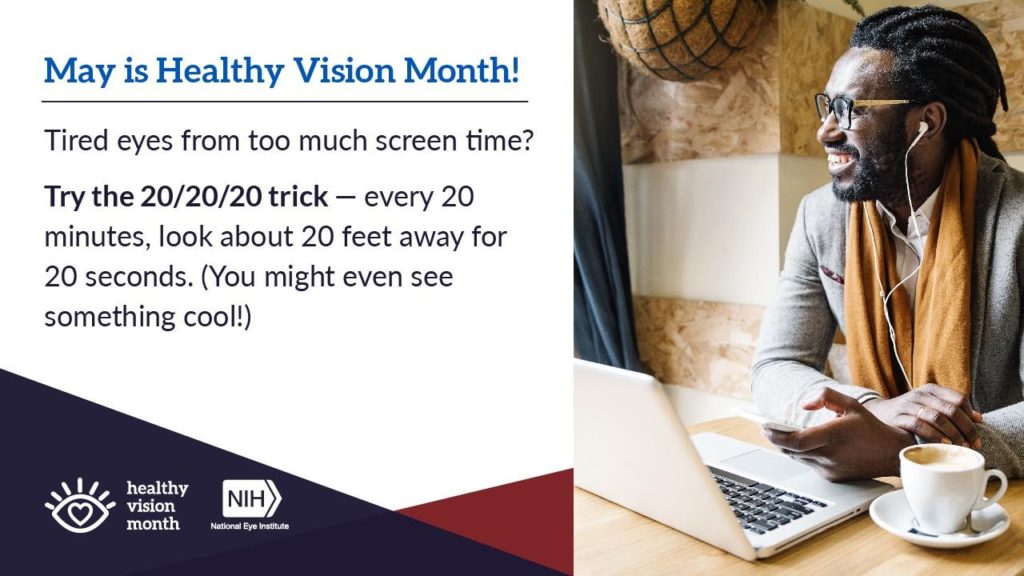Healthy Vision Month 2021: Eye on Health Equity
VisionAware joins with the National Eye Institute (NEI) in bringing attention to this important month. This year’s theme is the importance of increasing diversity in the eye health field — and how that can help everyone have an equal chance for healthy vision.
Healthy vision has many components:
Eat right. Try green and leafy vegetables and fish high in omega 3 such as salmon.
Get physical. Think exercise, indoors or outdoors. Read all about the benefits of exercise.
Rest your eyes! Many of us, especially these days, spend hours in front of the computer. NEI suggests trying the “20/20/20 trick.” Every 20 minutes look 20 feet away for 20 seconds!

Have your vision checked. Many eye diseases don’t have any warning signs, so you could have an eye problem and not know it. The good news is there’s a lot you can do to set yourself up for a lifetime of seeing well! Be sure to read the difference between a vision screening and a dilated eye exam.
As part of the theme of Healthy Vision Month, NEI chooses ambassadors. According to Ambassador Dr. Joseph Comey, “in the U.S., 13 percent of people are Black, but less than 5 percent of doctors are Black.” Further, Ambassador Brenda Fadeyi, O.D., states that, “I’ve seen so many Latino patients who have gone to a non-Spanish speaking doctor…and didn’t understand what the doctor told them. So, they didn’t get their eyes examined until many years later, and by then they had vision loss that could have been prevented.”
 Ambassador Dr. Brenda Fadeyi
Ambassador Dr. Brenda Fadeyi
These statements are even more important since “Hispanic Americans age 50 and older are at high risk for developing diabetic retinopathy.” (Diabetic Retinopathy Data and Statistics | National Eye Institute (nih.gov). Further, “Black Americans age 40 and older are at the highest risk of developing the disease compared with people of other races. By age 69, nearly six percent of black Americans have glaucoma; their risk rises to nearly 12 percent after age 80.” (Glaucoma Data and Statistics | National Eye Institute (nih.gov))
Read more about Healthy Vision Month 2021 by visiting NEI.
Additional Resources
- VisionAware offers many resources related to eye health and vision rehabilitation.
- You can also check out our archived webinar on monitoring your blood sugar and using insulin.
- For those with glaucoma, VisionAware has a must-read post by Steph McCoy: Glaucoma: My Denial of the Invisible Enemy Within.
- You can read Joe Lovett’s reflections on his journey with glaucoma and watch the Going Bind: Coming Out of the Dark About Vision Loss Q&A session where Joe, some of the people from the move, and low-vision professionals field questions about living with low-vision.